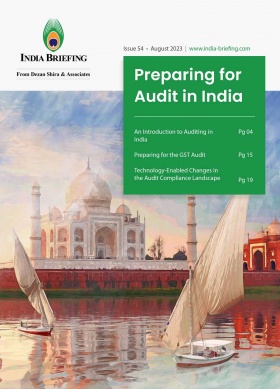Draft Revisions to India’s Merger Control Regulations Governing Combinations
The Competition Commission of India (CCI) has released the draft Competition (Combinations) Regulations, 2023 to implement the amendments to the Competition Act. Key provisions include deal value thresholds, substantial business operations criteria, flexibility for on-market transactions, and higher filing fees. The removal of exemptions regarding the Green Channel route are notable. The draft regulations formalize pre-filing consultations, introduce a modification format, but lack transitional provisions, posing challenges for ongoing transactions.
The Competition (Amendment) Act, 2023 recently brought about substantial modifications to the Competition Act, 2002, ushering in a new streamlined regime for merger control in India. These changes necessitated the issuance of comprehensive regulations by the Competition Commission of India (CCI) to implement the amended provisions.
On September 5, 2023, the CCI unveiled the draft Competition (Combinations) Regulations, 2023 for public feedback and is inviting comments till September 25, 2023. These draft regulations not only seek to operationalize the fresh legislative changes but also propose revisions to the existing Combination Regulations, ultimately replacing them upon enforcement.
Introduction of deal value thresholds
One of the most notable amendments under the Competition (Amendment) Act, 2023 is the introduction of deal value thresholds (DVT), supplementing the existing asset/turnover-based thresholds.
The draft combination regulations outline how the value of a transaction will be calculated, encompassing various considerations, both direct and indirect. These include non-compete fees, incidental arrangements, and all inter-connected steps within two years of the transaction. Importantly, if the precise transaction value can’t be determined with certainty, it will be considered to exceed the DVT.
Calculating the value of the transaction in DVT
- DVT threshold: The initial aspect of the DVT pertains to whether the value of the transaction surpasses INR 20 billion (approx. US$240 million).
- Methodology for calculating transaction value: The draft combination regulations outline a comprehensive methodology for determining the value of a transaction. It underscores the necessity to consider every valuable consideration, irrespective of whether it is direct or indirect, current or prospective.
- Inclusive considerations: Within this methodology, there are several indicative examples of considerations that must be taken into account. These encompass:
- Non-compete fees
- Incidental arrangements entered into between the involved parties within two years of the transaction. This includes agreements related to technology assistance, licensing of intellectual property rights, and the supply of materials.
- The value of all interconnected steps is also a vital component. The draft combination regulations explicitly state that all transactions between the parties within two years before the main transaction are to be deemed interconnected, and their value must be included.
- Uncertainty in transaction value: In cases where the precise value of the transaction cannot be reasonably ascertained, the draft combination regulations stipulate that the transaction will be considered to exceed the prescribed DVT.
Determining substantial business operations in India
- Criteria for substantial business operations: The second facet of the DVT focuses on whether the target entity possesses what is termed as substantial business operations in India.
- Quantitative thresholds: The draft regulations establish specific criteria to assess whether an entity meets the definition of having substantial business operations in India. These criteria include having 10 percent or more of its total global:
- Users, subscribers, customers, or visitors within India at any point in the last 12 months.
- Gross merchandise value in the preceding 12 months.
- Turnover derived from all products and services in the preceding financial year.
- Broad applicability: Notably, this set of criteria is deliberately broad, which means that in transactions involving technology companies, the target enterprise may potentially meet this test even without having substantive assets or a substantial turnover in India.
Enhanced flexibility for on-market transactions
The Amendment Act introduces a significant change aimed at providing greater flexibility for acquirers engaging in on-market transactions. This change allows them to seek derogations from the standstill obligations, enabling them to capitalize on market opportunities without undue delays.
Notification requirements for on-market transactions
Under the draft combination regulations, it is stipulated that such on-market transactions must be formally notified to the CCI within 30 days from the completion of these transactions. This notification requirement ensures transparency and regulatory oversight.
Permissible actions prior to CCI approval
The draft combination regulations further clarify that certain actions can be taken by the acquirer before receiving formal approval from the CCI. These actions include:
- Benefiting from economic benefits: Acquirers are allowed to enjoy economic benefits stemming from their shareholding, such as receiving dividends.
- Disposition of shares: Acquirers can dispose of shares as needed.
- Exercise of voting rights: Acquirers are permitted to exercise voting rights in matters related to liquidation or insolvency proceedings. However, it is crucial to note that they must refrain from any direct or indirect influence over the target enterprise during this period.
Facilitating on-market transactions
Upon implementation, these changes are expected to streamline the process of executing open offers and other on-market purchases. This enhanced flexibility should enable acquirers to more efficiently navigate the regulatory landscape while pursuing market opportunities.
Removal of schedule I exemptions
One noteworthy change presented in the draft combination regulations pertains to the removal of the Schedule I Exemptions, which currently provide various exemptions from the notification requirement. These exemptions cover minority share acquisitions, intra-group transactions, bonus issues, stock splits, and creeping acquisitions.
It remains unclear whether the intention is to completely eliminate these exemptions or if they may be reintroduced through separate notifications or rules issued by the Government. The lack of clarity regarding this aspect creates some ambiguity in the regulatory landscape.
Potential implications of exemption removal
If the decision is to entirely remove these exemptions, it is likely to result in a notable increase in the number of filings submitted to the CCI. This would encompass a wide range of transactions, including those that do not raise any competition concerns.
The potential consequence of this scenario is an increased burden on businesses and regulatory authorities to process a higher volume of filings, which may include many transactions that were traditionally exempt due to their limited impact on competition. This change could impact the efficiency of the regulatory process and necessitate additional resources for compliance.
Removal of the green channel route in draft regulations
Currently, the Combination Regulations include a Green Channel route for notifying certain transactions. This route is particularly useful for transactions that do not involve any horizontal overlap or vertical or complementary relationships. Under the Green Channel, transactions are deemed approved on the date of filing, which has made it a popular and efficient avenue for notifying non-problematic transactions. The business community has praised this approach.
Deletion of provisions in draft regulations
The draft combination regulations have removed provisions related to the Green Channel route. However, it’s worth noting that while these provisions have been deleted, there appears to be a reference to this route in the draft Form I. Additionally, it seems that enabling provisions for the Green Channel may be built into the Amendment Act, although the wording of these draft provisions is unclear and does not expressly mention Green Channel filings. Businesses await further clarification regarding the fate of the Green Channel route.
Increase in filing fees
The draft combination regulations introduce a significant increase in the filing fees for both Form I (short form) and Form II (long form) submissions. This adjustment impacts the financial requirements for notifying transactions to the Competition Commission of India (CCI).
- Form I fees: The filing fees for Form I have been raised from INR 2 million (approximately US$24,000) to INR 3 million (approximately US$36,000).
- Form II fees: For Form II submissions, the filing fees have been increased from INR 6.5 million (approximately US$78,000) to INR 9 million (approximately US$108,000).
This change in filing fees may have financial implications for businesses involved in merger and acquisition activities, as they will need to allocate additional resources to meet the heightened filing requirements.
Codification of pre-filing consultation mechanism
The draft combination regulations codify the pre-filing consultation mechanism, which was informally available to parties engaged in a transaction. This formalization provides a structured process for parties to seek guidance and clarification from the CCI prior to making a formal filing.
However, it’s important to note that the draft combination regulations emphasize that any guidance provided during the pre-filing consultation is not legally binding on the CCI. While it serves as a valuable mechanism for parties to gain insights into the regulatory process and potential concerns, it does not guarantee a specific outcome or approval. Parties must still adhere to the formal review and decision-making process of the CCI, which is not influenced by the guidance provided in pre-filing consultations.
Introduction of modification format
Under the draft combination regulations, there is a departure from the current regulatory regime by introducing a specific format for offering modifications or remedies to the CCI. This format is designed to streamline the process and provide clarity to parties involved in merger transactions.
Key elements of the modification format
The prescribed format for offering modifications or remedies to the CCI includes the following key elements:
- Summary of modifications: A concise summary outlining the proposed modifications or remedies.
- Addressing identified concerns: Detailed information explaining how the proposed modifications or remedies will effectively address the concerns that have been identified by the CCI during the review process.
- Divestment product details: If applicable, comprehensive details regarding any divestment products that are part of the proposed modifications. This may include information about the specific assets, business units, or entities that will be divested as part of the remedy.
- Monitoring arrangements: Information regarding the arrangements that will be put in place to monitor and ensure compliance with the proposed modifications or remedies.
Timelines for modification process
The draft combination regulations also introduce specific timelines for various stages of the modification process. These timelines aim to add certainty and structure to the process, ensuring that both the parties and the CCI adhere to defined deadlines.
Lack of transitional provisions in the draft regulations
One notable concern with the draft combination regulations is the absence of transitional provisions. Transitional provisions are typically included in regulatory changes to address transactions that have already been signed but have not yet closed at the time the new regulations come into effect.
In the absence of transitional provisions, a particular challenge arises when assessing the applicability of the DVT provisions. This is especially problematic for transactions that do not meet the other jurisdictional thresholds but have already been signed before the new regulations are introduced.
About Us
India Briefing is produced by Dezan Shira & Associates. The firm assists foreign investors throughout Asia from offices across the world, including in Delhi and Mumbai. Readers may write to india@dezshira.com for more support on doing business in India.
We also maintain offices or have alliance partners assisting foreign investors in Indonesia, Singapore, Vietnam, Philippines, Malaysia, Thailand, Italy, Germany, and the United States, in addition to practices in Bangladesh and Russia.
- Previous Article Indiens Nachhaltigkeitsanforderungen und Regeln für ESG-Rating-Anbieter
- Next Article 12th India-UK Economic and Financial Dialogue: Key Developments









